Buffalo vs Bison: 9 Differences Between 4 Species
What are the differences between a bison and a buffalo? In this post, you’ll learn the 9 buffalo vs bison differences across 4 species from Africa, Asia, and North America. Plus lots of photos and facts.
We’ll be focusing on the American Bison and two types of buffalo: Water and Cape.
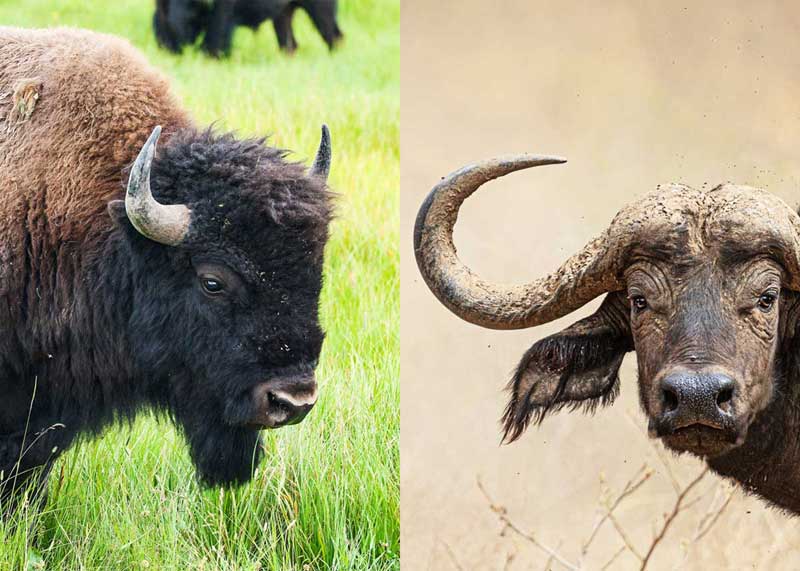
Quick Overview: Bison vs Buffalo
American Bison
There is one species of bison in North America.
- Latin Name: Bison bison
- Location: Throughout North America, usually in river valleys, prairies, and plains
- Size: Up to 2 meters (6 feet 7 inches) tall, 3.5 meters (11 feet 6 inches) long, 1180 kilograms (2600 pounds)
- Key Features: Oversized head and hump on shoulders, useful for moving snow
Water Buffalo (2 Species)
There are two species of water buffalo in Asia – one wild and another domesticated. Both are considered water buffalo.
- Latin Name:
- Wild: Bubalus arnee
- Domesticated: Bubalus bubalis
- Location: Throughout Asia, near water
- Size:
- Wild: Up to 1.9 meters (6 feet 3 inches) tall, 3 meters (9 feet 10 inches) long, 1180 kilograms (2600 pounds)
- Domesticated: Up to 1.6 meters (5 feet 3 inches) tall, 3 meters (9 feet 10 inches) long, 550 kilograms (1212 pounds)
- Key Features: Crescent-shaped horns that grow up to 2 meters (6 feet 6 inches)
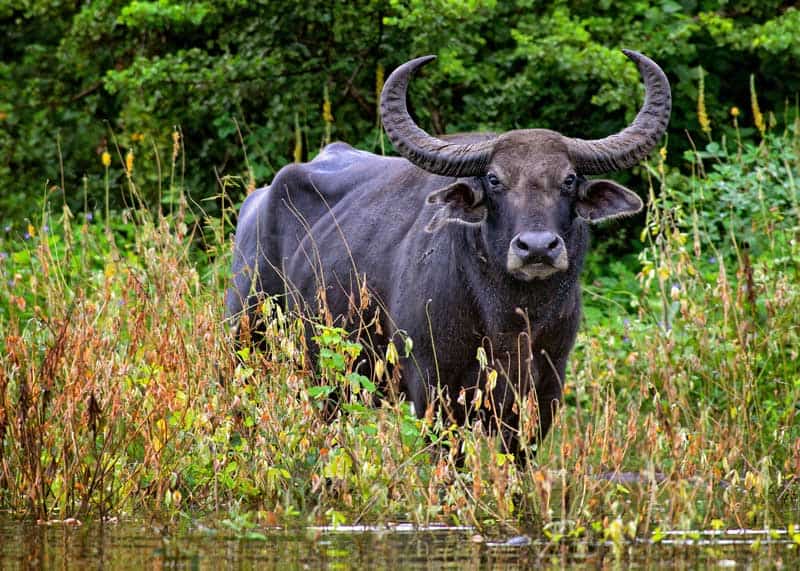
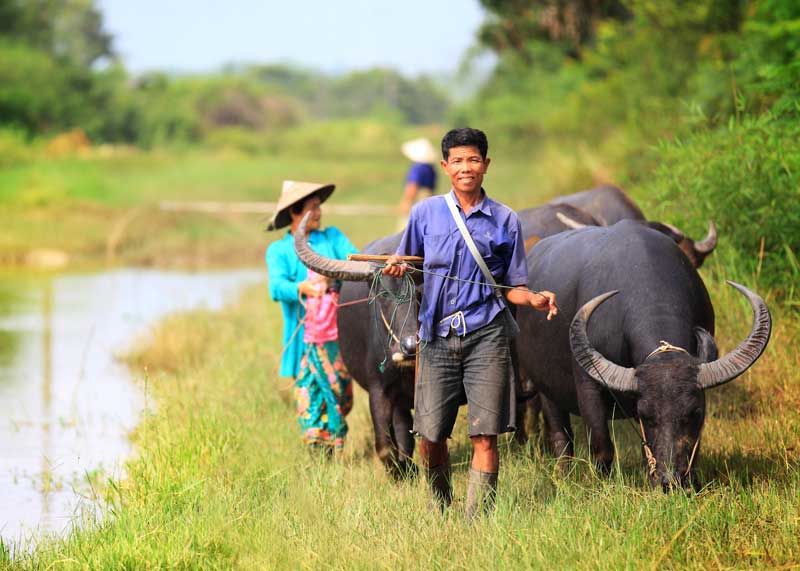
Cape (African) Buffalo
There is one species of buffalo in Africa, known as the African buffalo. The Cape buffalo is a subspecies, and the most widely distributed of the African buffalo.
- Latin Name: Syncerus caffer
- Location: Sub-Saharan Africa, near water
- Size: Up to 1.7 meters (5 feet 6 inches) tall, 3.4 meters (11 feet 2 inches) long, 866 kilograms (1910 pounds)
- Key Features: Horns in the shape of a handlebar mustache
Learn more about the African Cape Buffalo.
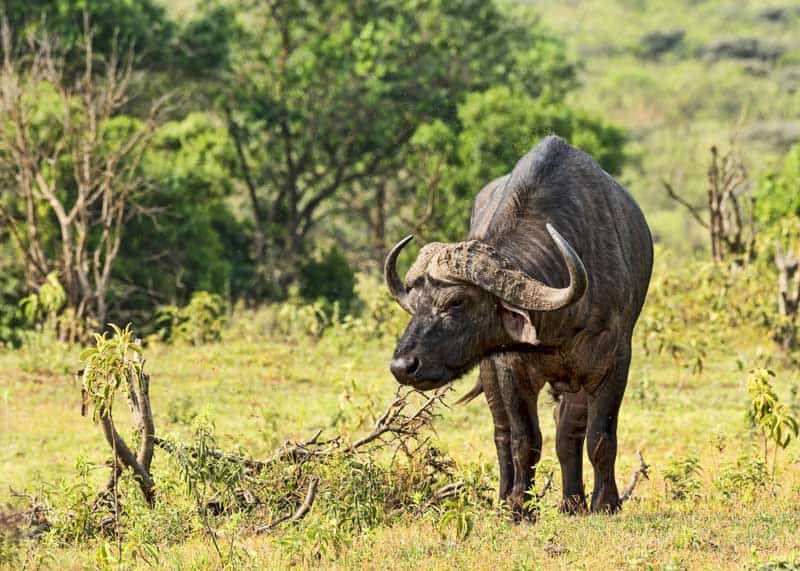
9 Differences: Bison vs Buffalo
Both bison and buffalos are part of the Bovidae family. They may seem like the same animal, but there are some big differences between these two enormous animals.
Here are 9 differences between bison and buffalo.
1. Location
American Bison can be found in North America. Wood Bison and Plains bison are the two subspecies of American bison.
Cape Buffalos are found in sub-Saharan Africa.
Wild Water Buffalos and Domestic Water Buffalos are found on the continent of Asia. Wild Water Buffalos can be found in India, Nepal, Bhutan, Thailand, and Cambodia. The majority of domestic water buffalo can be found across India, Pakistan, China, and Southeast Asia. Other domestic breeds of water buffalo can be found in Central and South America, Europe, and Australia.
2. Habitat
With different climates, bison and buffalo habitats are different, with some similarities.
American Bison can be found in river valleys, prairies, and plains. Bison can also graze in areas with hills and mountains if they’re not too steep.
Both Cape and Water Buffalos like to live by the water. Cape Buffalos prefer habitats by rivers, but can also be found in areas like dense lowland forests, rainforests, and grasslands. They can be found within 20 km of water, preferring to be as close as less than 1 km.
Water Buffalo can also be found in wet grasslands as well as tropical and subtropical forests. Despite being land animals, they are heavily dependent on water and can be found spending lots of time in rivers or mudholes.
3. Head and Shoulders
American Bison have a large, even oversized head, with a big hump of muscle on their shoulders. This allows the bison to move snowdrifts aside during the winter.
Buffalos have smaller heads and no hump on their shoulders.
4. Horns
American Bison horns can grow on average to 1 foot 8 inches (0.5 meters), and are turned upwards from their heads.
Buffalos have larger horns. Cape Buffalos have wide horns that can grow up to 3 feet 3 inches (one meter) long and are shaped like a handlebar mustache, curling down then back up.
Water Buffalos have more crescent-shaped horns and can grow longer, up to 6.5 (2 meters) in length.
Antlers vs Horns? Here are the differences
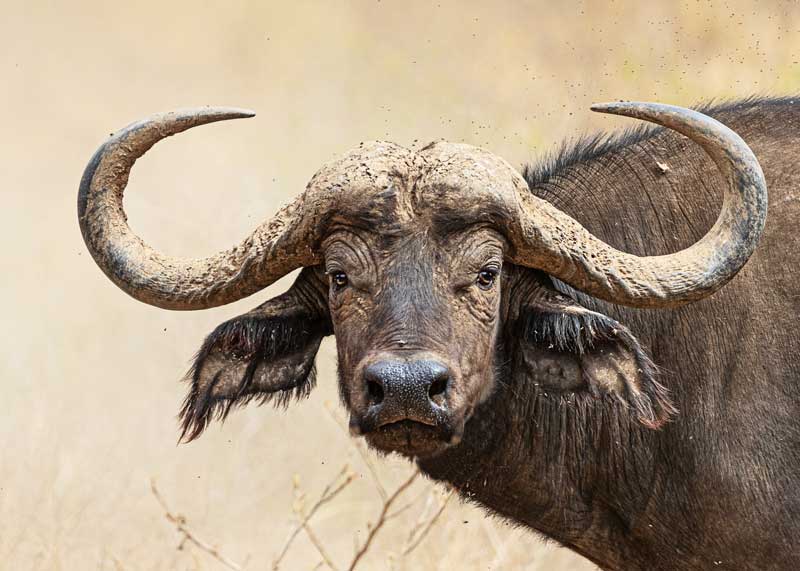
5. Facial Features
How do bison and buffalo differ when it comes to their face? Simply put, one has facial hair and one does not.
American Bison have a long unkempt beard under their chin, and hair right on their face.
Both Cape and Water Buffalos don’t have a beard. They also have very little, if any hair at all on the rest of their face.
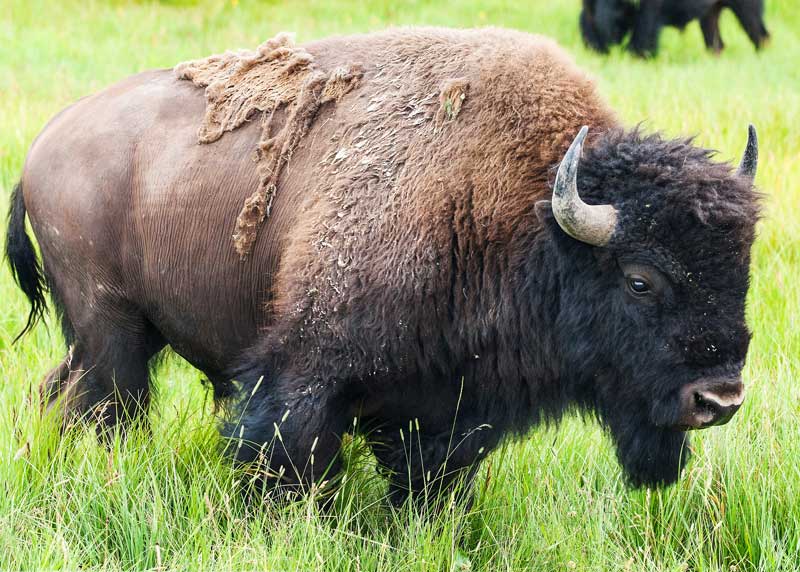
6. Body
Continuing the topic of hair, here’s the next difference between buffalos and bison. Pretty much the same difference as the last point. Bison are hairier than buffalos.
Bison have a dense coat that is double-layered. For American bison, this is necessary for the extreme temperatures of their North American habitat. In fact, a bison’s coat gets thicker in the winter and is dark brown, and they shed their inner coat during the spring. Thus, their coat becomes a lighter brown color for winter.
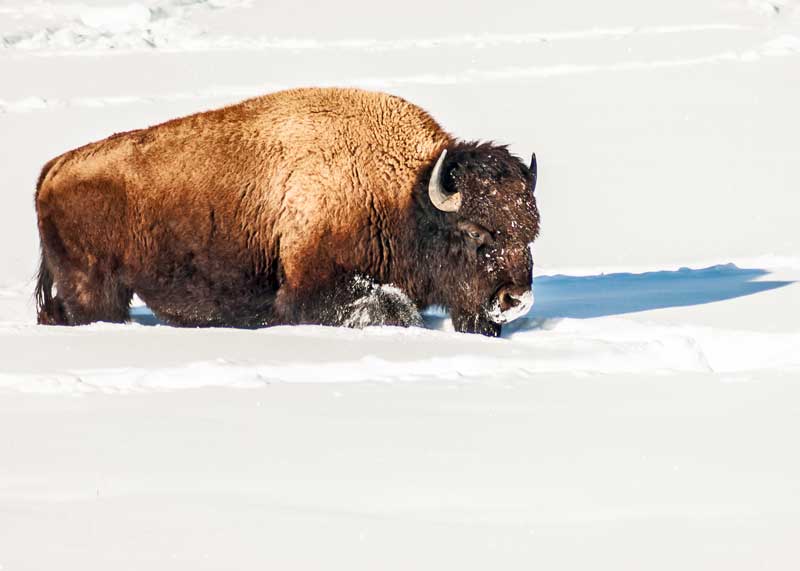
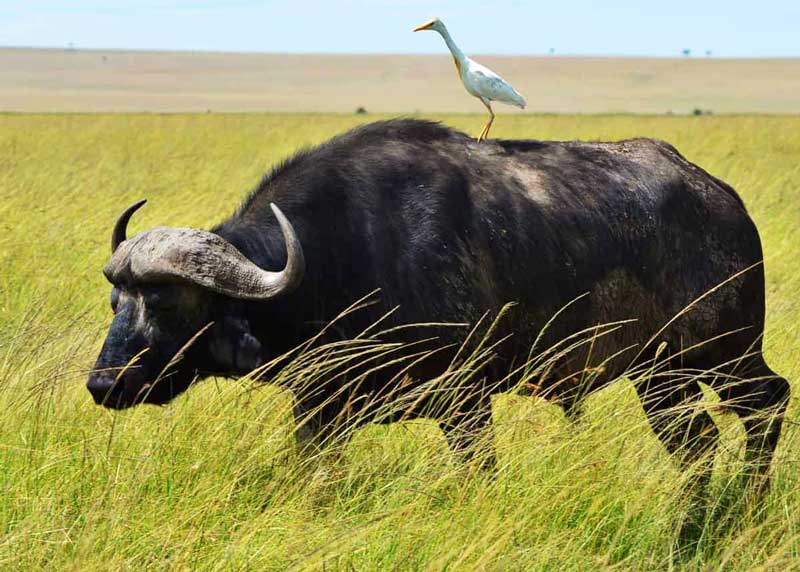
Water buffalos have some hair but not that much. The hair is long and can be anywhere from grey to black.
7. Height
Bison are generally taller than buffalo. American bison can get up to 6 feet 7 inches (2 meters) in height.
Wild Water Buffalos can get up to 6 feet 3 inches (1.9 meters) tall.
Domesticated Water Buffalos are shorter, getting up to 5 feet 3 inches (1.6 meters) in height.
Cape Buffalos can get up to 5 feet 6 inches (1.7 meters) tall and 11 feet 6 inches (3.4 meters) in length.
8. Length
Once again, bison have buffalos beat, though not by much compared to Cape Buffalos. American Bison can reach lengths of 11 feet 6 inches (3.5 meters).
Cape Buffalos come in longer, at 11 feet 2 inches (3.4 meters).
Both Wild and Domesticated Water Buffalos can get up to 9 feet 10 inches (3 meters) in length.
9. Weight
American bison are heavier than buffalos. They can weigh around 2600 pounds (1180 kilograms), with the heaviest recorded weight being 2800 pounds (1270 kilograms).
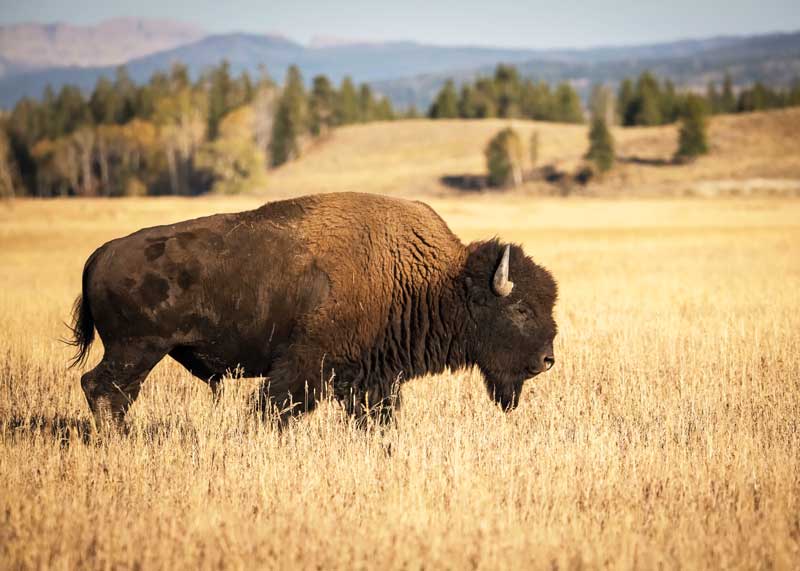
Cape Buffalo can get up to 1910 pounds (875 kilograms).
Wild Water Buffalos can get to around 2600 pounds (1180 kilograms), like the American bison, while their domesticated kin is lighter, though by no means light. Domesticated Water Buffalos can get to 1210 pounds (550 kilograms).
Both bison and buffalo can be quite intimidating, for sure!
3 Types of Buffalo
There are three buffalo species. Within these species, there are numerous subspecies (wild) and breeds (domesticated).
- African Buffalo: (Syncerus caffer) The Cape buffalo lives exclusively in Africa. There are three generally accepted subspecies. They include Cape Buffalo (Syncerus caffer caffer), forest buffalo (Syncerus caffer brachycero), and forest buffalo (Syncerus caffer nanus). The forest buffalo is also known as the dwarf buffalo or Congo buffalo. Two other subspecies have been described but aren’t generally accepted: Nile buffalo and the mountain (or Virunga) buffalo.
- Wild Water Buffalo: (Bubalus arnee)
- Domestic Water Buffalo: (Bubalus bubalis) These come in a variety of breeds. Carabao (Philippines), Murrah and Jafarabadi (India), Murrah (India, Pakistan, Ecuador, Guatemala), Australian buffalo (Australia), and Mediterranean (Italy). In all, there are at least 155 breeds of domestic water buffalo, and are found in Central America, South America, Europe, Asia, Africa, and Australia.
Because of similar appearance, sometimes guar (Indian bison) and American bison are both inaccurately labeled as buffalo. While American bison can be aggressive, guar are not as aggressive to humans as wild water buffaloes.
Learn more about how fast African buffalos can run.
Are there any buffalo in North America?
No, there are no “true” buffalos (water or cape) in the wild in North America, though the term is often used interchangeably with “bison”.
Why are there references to buffalo in North America?
You may think of such references as Buffalo, New York, or Head-Smashed-In Buffalo Jump in the Rocky Mountains. It’s not entirely clear as to how bison got called this name, though European settlers are thought to be the ones that started the trend.
One early reference to bison being called “buffalo” is by French explorer Samuel de Champlain. In the 1600s, he referred to the animals as “buffalos” when he saw skins and a drawing of the beast from the First Nations people he had come in contact with.
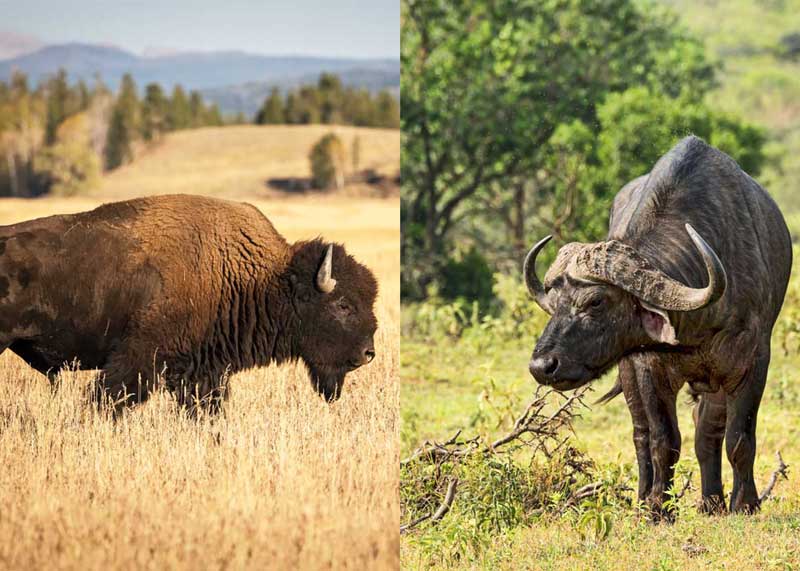
More reading: Learn about all 74 Types of African Antelopes and all 9 Types of Giraffes.
Your Turn!
What did we miss? Think you can now tell the difference between a buffalo and a bison? Thanks for reading, and let us know in the comments below!







American bison have a much larger heart and esophagus which gives them much great speed (45 mph compared to 20 mph) and a bison can run greater distances for the same reason. They are oxygen burning machines.